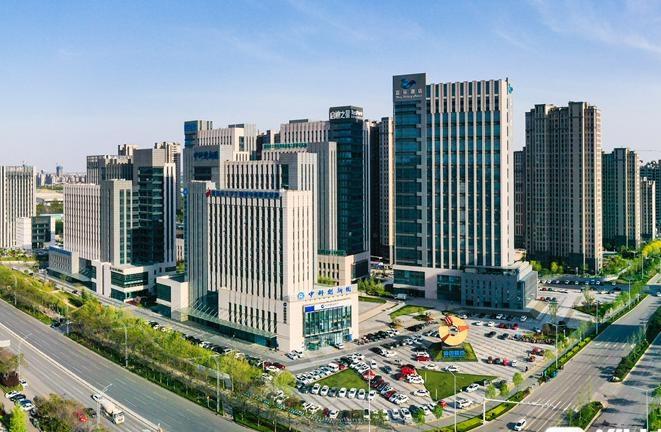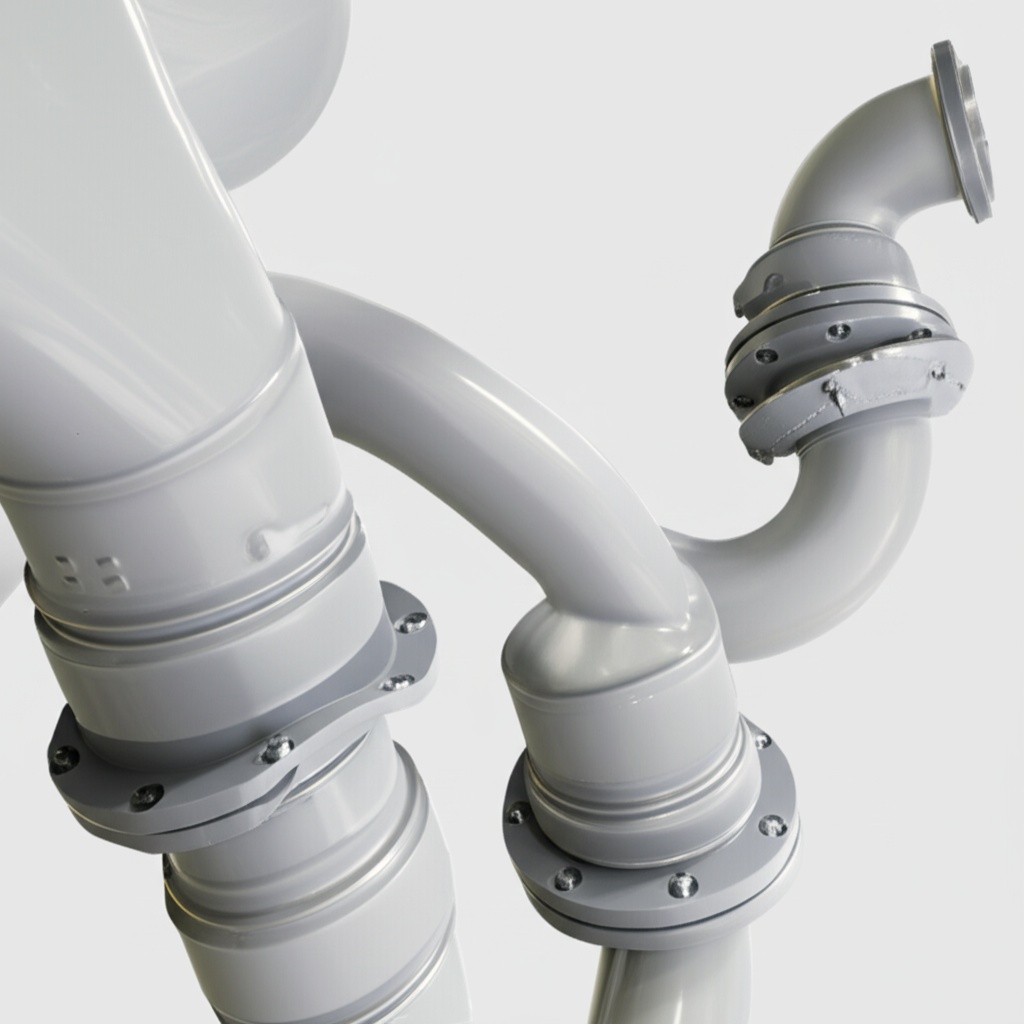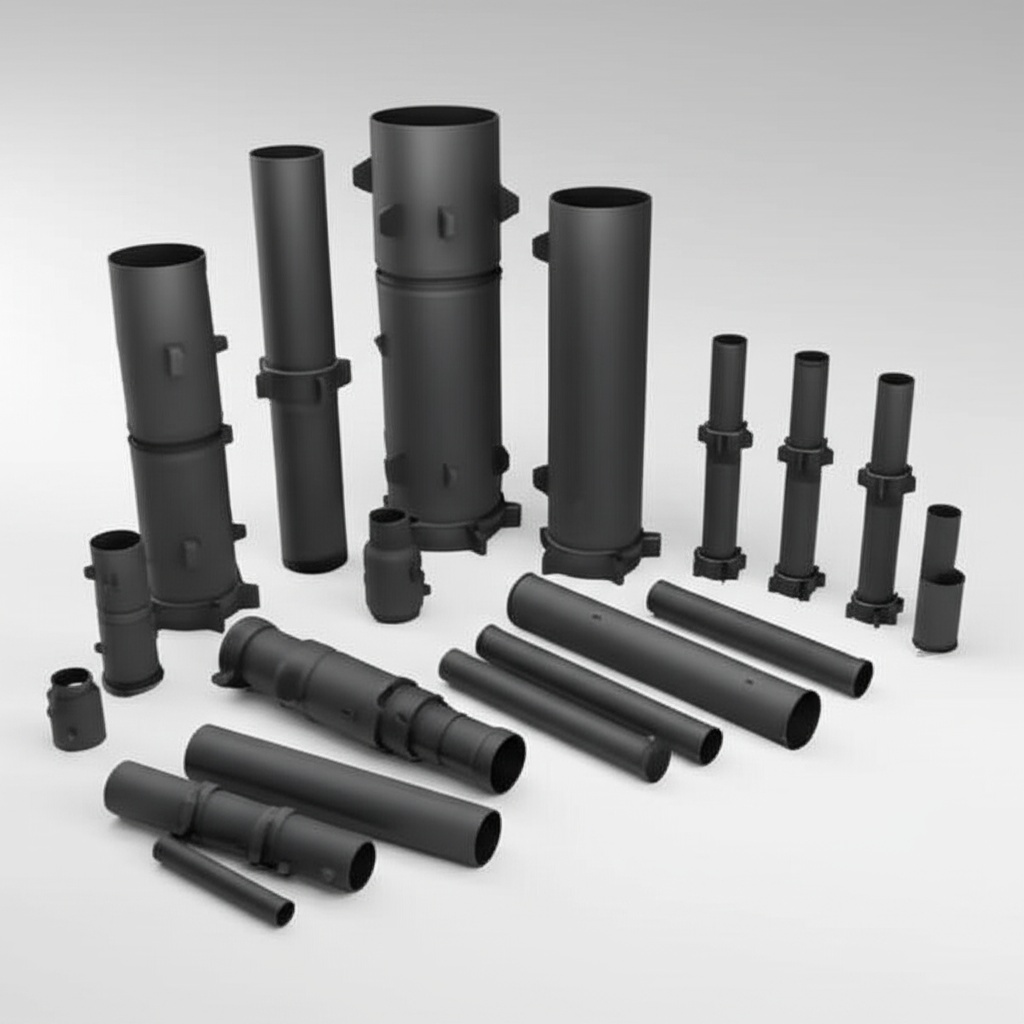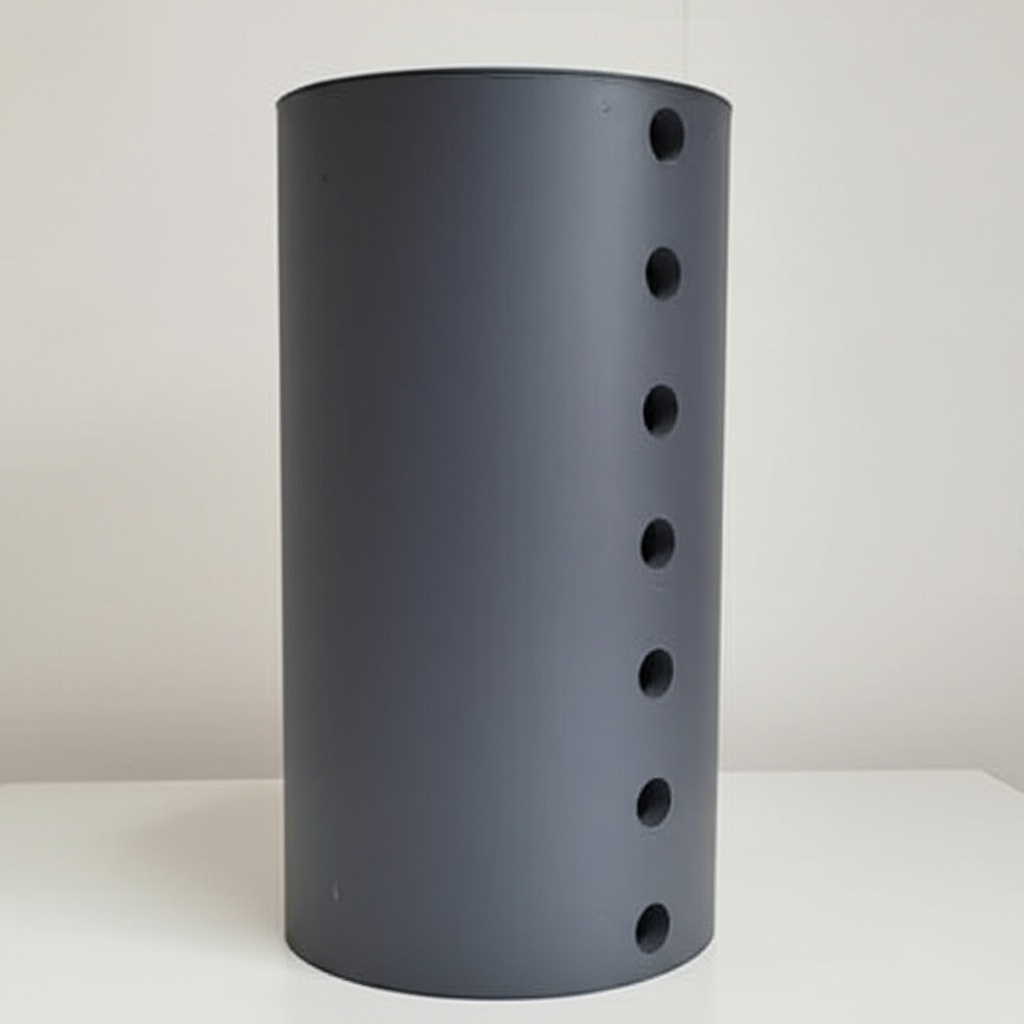SiC’s Expanding Role in the Modern Energy Sector
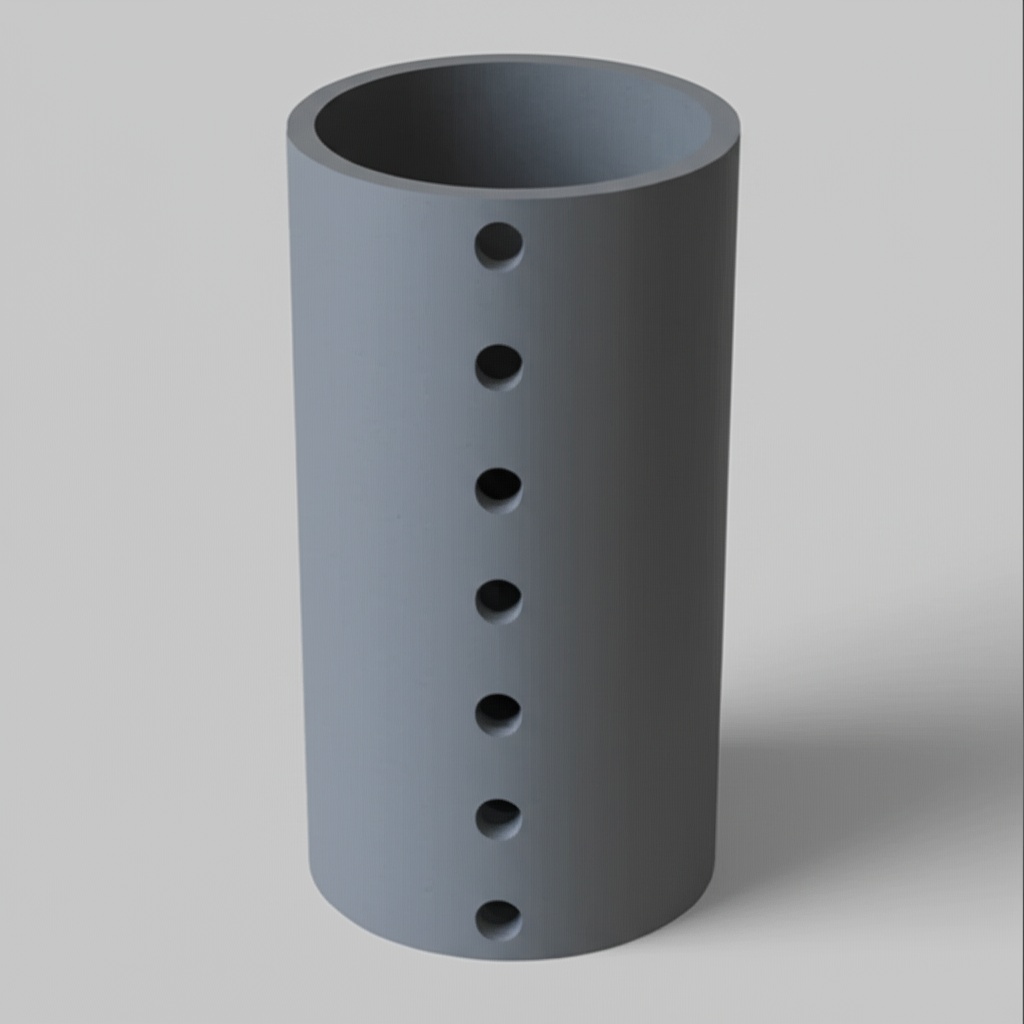
Share
SiC’s Expanding Role in the Modern Energy Sector
1. Introduction: The Energy Sector’s Demand for Advanced Materials like SiC
The global energy sector is undergoing a profound transformation. Driven by the urgent need for greater efficiency, sustainability, and reliability, industries are increasingly seeking
2. Key Applications of SiC in the Modern Energy Landscape
Silicon Carbide’s versatile properties have paved the way for its adoption across a wide spectrum of energy applications. Its ability to enhance efficiency, durability, and performance is making a tangible impact:
- Power Electronics: This is arguably SiC’s most impactful domain within the energy sector.
SiC power electronics , such as MOSFETs, SBDs, and power modules, are revolutionizing power conversion. They are integral to:Silicon carbide inverters for solar and wind energy systems, enabling higher switching frequencies, which reduce the size of passive components, lower energy losses, and improve overall system efficiency.- High-efficiency converters and power supplies for various industrial and grid applications.
- Power conditioning systems for improved grid stability and quality.
- Renewable Energy Systems: Beyond inverters, SiC finds use in other
renewable energy components . This includes durable parts for solar panel manufacturing equipment (e.g., handling high temperatures and abrasive materials) and critical components within wind turbine power conditioning systems that demand high reliability. - Energy Storage Solutions: SiC is being explored for components in advanced battery systems, including thermal management solutions due to its high thermal conductivity. It also plays a role in high-temperature thermal energy storage systems, where its structural integrity at extreme temperatures is invaluable.
- Grid Modernization: The development of smart grids benefits from SiC technology. Solid-State Transformers (SSTs) and Flexible AC Transmission Systems (FACTS) devices incorporating SiC can offer faster response times, improved control, and higher efficiency, contributing to a more resilient and flexible electricity grid.
- High-Temperature Processes: Many energy generation and conversion processes involve extreme temperatures.
SiC heat exchangers , burner nozzles, kiln furniture, reformers for hydrogen production, and recuperators leverage SiC’s thermal stability, corrosion resistance, and mechanical strength. Thesecustom SiC energy solutions lead to more efficient heat transfer and longer component life. - Electric Vehicle (EV) Infrastructure: While EVs are a transport application, their charging infrastructure places significant demands on the energy grid. SiC is crucial in fast EV chargers (on-board and off-board) and EV power modules, directly impacting energy efficiency and charging speeds, thus influencing grid load and management.
3. Why Custom Silicon Carbide is a Game-Changer for Energy Applications
While standard SiC components offer significant advantages,
- Enhanced Thermal Management: Energy systems, particularly power electronics, generate substantial heat. Custom SiC components can be designed with optimized geometries and integrated cooling features, leveraging SiC’s superior
SiC thermal management capabilities (high thermal conductivity) to efficiently dissipate heat. This allows for higher power densities and improved device longevity. - Improved Electrical Performance: The wide bandgap and
high voltage SiC breakdown field are inherent material advantages. Customization allows for designs that fully exploit these properties, such as specific doping profiles or tailored geometries for electric field shaping in high-voltage power devices, leading to lower losses and higher operational limits. - Superior Durability in Harsh Environments: Energy applications can expose components to extreme temperatures, corrosive chemicals, and abrasive particles. Custom SiC formulations (e.g., specific grades like SSiC) and designs can maximize
wear-resistant SiC properties and chemical inertness, extending the operational life of critical parts in applications like geothermal energy extraction or advanced combustion systems. - Optimized Component Design and Integration: Many energy systems require components with complex shapes for optimal flow, heat transfer, or system integration.
Custom engineered ceramics like SiC can be manufactured into near-net shapes or intricate designs that would be impossible or prohibitively expensive with other materials, allowing for more compact and efficient overall system designs. - Application-Specific Material Properties: Customization can involve selecting or even developing specific SiC grades or composites to achieve a precise balance of properties, such as electrical resistivity, thermal expansion, or fracture toughness, perfectly aligned with the unique demands of an energy application.
By opting for custom SiC, engineers and procurement managers in the energy sector can move beyond off-the-shelf limitations, unlocking new levels of performance and durability that are critical for advancing energy technologies.
4. Recommended SiC Grades for Optimal Energy Sector Performance
The term “Silicon Carbide” encompasses a family of materials, each with distinct characteristics derived from its manufacturing process and microstructure. Selecting the appropriate SiC grade is crucial for ensuring optimal performance and longevity in demanding energy sector applications. Here’s a look at common grades and their typical uses:
| SiC Grade | Key Characteristics | Typical Energy Applications |
|---|---|---|
| Sintered Silicon Carbide (SSiC) | High purity (>98-99%), high density, exceptional strength, excellent chemical and corrosion resistance, high thermal conductivity, good wear resistance. Maintains strength at very high temperatures. | Pump seals and bearings in aggressive media, high-performance heat exchanger tubes, components for ultra-pure water systems in power plants, semiconductor processing equipment parts used in manufacturing energy devices, valve components. |
| Reaction-Bonded Silicon Carbide (RBSiC/SiSiC) | Contains free silicon (typically 8-15%), good thermal shock resistance, high thermal conductivity, excellent wear and corrosion resistance, ability to form complex and large shapes, relatively cost-effective for intricate designs. Limited by the melting point of silicon (~1410°C for some properties). | Burner nozzles, kiln furniture, radiant heater tubes, heat recuperators, wear liners for material handling in biofuel production, large structural components in high-temperature furnaces. Ideal for |
| Nitride-Bonded Silicon Carbide (NBSiC) | SiC grains bonded by a silicon nitride phase. Good thermal shock resistance, high hot strength, good resistance to molten metals and corrosive gases. Lower thermal conductivity than SSiC or RBSiC. | Furnace linings, thermocouple protection tubes, components for non-ferrous metal processing (e.g., aluminum reduction cells), cyclone liners in biomass gasification. |
| Chemical Vapor Deposited SiC (CVD SiC) | Ultra-high purity (often >99.999%), theoretically dense, exceptional surface finish possible, excellent chemical resistance. Typically produced as coatings or thin, free-standing parts. | Substrates for power electronics (though bulk SiC wafers are more common for active devices), protective coatings for graphite components in reactors, optics for energy research (e.g., mirrors in concentrated solar power). |
| Recrystallized Silicon Carbide (RSiC) | High porosity (typically 10-20%), excellent thermal shock resistance due to porosity, relatively lower strength than dense grades but maintains it to very high temperatures. | Kiln furniture (setters, plates, beams), radiant tubes, specialized filters for hot gases, porous burners. |
| Graphite-Loaded SiC / SiC-Graphite Composites | Combines SiC’s properties with graphite’s lubricity and enhanced thermal shock resistance. Electrical conductivity can be tailored. | Mechanical seals requiring self-lubrication, bearings operating in dry or mixed-friction regimes, current collectors. |
The choice of
5. Critical Design Considerations for SiC Components in Energy Systems
Designing components with Silicon Carbide for energy systems requires a nuanced understanding of its ceramic nature. While SiC offers remarkable properties, its characteristic brittleness and specific manufacturing constraints necessitate careful design to maximize performance and reliability. Key considerations include:
- Thermal Stresses and Management:
- SiC generally has a lower coefficient of thermal expansion (CTE) than metals. When SiC components are joined to metallic parts,
thermal stress analysis SiC is crucial to manage CTE mismatches and prevent stress-induced failures during thermal cycling. - Design for uniform heat distribution to minimize thermal gradients, which can cause internal stresses. Incorporate fillets and radii to reduce stress concentrations at thermal hot spots.
- SiC generally has a lower coefficient of thermal expansion (CTE) than metals. When SiC components are joined to metallic parts,
- Mechanical Loads and Structural Integrity:
- Avoid sharp corners and edges, which are stress concentrators in brittle materials. Use generous radii and chamfers.
- Design SiC components to be loaded in compression where possible, as ceramics are significantly stronger in compression than in tension.
- Consider the effects of vibration, impact, and cyclic loading common in many energy applications (e.g., turbines, pumps).
- Electrical Insulation vs. Conduction:
- For power electronics, design must ensure adequate electrical insulation where needed, considering creepage and clearance distances, especially at high voltages.
- For applications like heating elements, the design must optimize for SiC’s resistive properties to achieve desired heating characteristics.
- Manufacturability and Geometric Complexity:
- While
custom SiC engineering allows for complex shapes, extremely intricate features, very thin walls, or high aspect ratios can increase manufacturing difficulty and cost.Designing with ceramics often involves a trade-off between ideal geometry and practicalSiC manufacturability . - Consider near-net-shape forming capabilities of processes like RBSiC to minimize post-sintering machining.
- While
- Joining and Assembly:
- Developing reliable methods for joining SiC to other SiC parts or to different materials (metals, other ceramics) is critical. Options include brazing, diffusion bonding, shrink fitting, or specialized adhesives. The joint design must accommodate operational stresses and temperatures.
- Operating Environment Compatibility:
- While SiC is highly resistant to corrosion and erosion, extreme environments (e.g., specific molten salts, very high-velocity particulate flows, or certain gaseous atmospheres at extreme temperatures) might require specific SiC grades or protective measures.
- Consider potential radiation exposure in nuclear energy applications and its effect on SiC properties.
- Tolerances and Surface Finish:
- Specify only the necessary tolerances and surface finishes, as tighter requirements significantly increase machining costs. Understand the functional requirements dictating these specifications.
Early collaboration between system designers and experienced SiC manufacturers is vital to address these considerations proactively, leading to robust and cost-effective SiC components for energy systems.
6. Achievable Tolerances, Surface Finishes, and Precision in SiC Manufacturing for Energy
The performance of Silicon Carbide components in demanding energy applications often hinges on achieving specific dimensional accuracies and surface characteristics. Manufacturers of
Tolerances:
Achievable
- As-Sintered Tolerances: For parts formed by processes like pressing, slip casting, or extrusion and then sintered, typical tolerances might range from ±0.5% to ±2% of the dimension. Reaction-bonded SiC (RBSiC) can often achieve tighter as-sintered tolerances due to lower shrinkage during firing compared to SSiC.
- Machined Tolerances: For applications requiring higher precision, post-sintering machining (primarily diamond grinding) is necessary. With precision grinding, tolerances can be significantly tighter:
- Standard ground tolerances: ±0.025 mm to ±0.05 mm (±0.001″ to ±0.002″) are commonly achievable.
- High-precision grinding: Tolerances down to ±0.005 mm (±0.0002″) or even tighter can be achieved for critical dimensions on smaller, less complex parts, though this significantly increases cost.
Surface Finish:
The
- As-Fired/As-Sintered: The surface finish of an as-sintered part is typically rougher, often in the range of Ra 1.0 µm to Ra 5.0 µm (40 to 200 µin), depending on the SiC grade and forming method.
- Ground Finish: Diamond
ceramic grinding can achieve surface finishes typically ranging from Ra 0.2 µm to Ra 0.8 µm (8 to 32 µin). This is suitable for many dynamic seals, bearings, and general mechanical components. - Lapped Finish:
Lapping SiC involves using fine abrasive slurries to achieve very smooth and flat surfaces. Lapped finishes can typically range from Ra 0.05 µm to Ra 0.2 µm (2 to 8 µin). This is often required for high-performance seals, valve seats, and some substrate applications. - Polished Finish: For the most demanding applications, such as optical components in concentrated solar power or substrates needing epitaxial growth in power device fabrication, SiC can be polished to an extremely fine finish, often Ra < 0.025 µm (< 1 µin), approaching mirror-like quality.
Precision Capabilities:
Achieving high precision involves more than just tight tolerances and smooth finishes. It encompasses:
- Flatness and Parallelism: Critical for sealing surfaces and mating components. Precision machining can achieve flatness values in the micron or even sub-micron range over small areas.
- Roundness and Cylindricity: Important for rotating components like shafts and bearings.
- Concentricity and Perpendicularity: Essential for aligned assemblies.
The impact of these specifications on cost is significant. Tighter tolerances and finer surface finishes require more extensive and precise machining operations, specialized equipment, and rigorous quality control, all of which contribute to higher component costs. Therefore, it’s crucial for designers to specify only the level of precision genuinely required by the application to ensure a cost-effective solution.
7. Essential Post-Processing for Enhanced SiC Performance in Energy Applications
While the inherent properties of Silicon Carbide are impressive, various
SiC Grinding : This is the most common post-processing step for SiC. Due to its extreme hardness, diamond abrasives are required. Grinding is used to:- Achieve precise dimensional tolerances that cannot be met by as-sintered parts.
- Create specific geometric features like grooves, chamfers, holes, and complex contours.
- Improve surface finish compared to the as-sintered state.
SiC Lapping : For applications requiring exceptionally flat and smooth surfaces, lapping is employed. This process uses a fine abrasive slurry between the SiC part and a lapping plate. It is critical for:- Mechanical seals and valve seats to ensure tight sealing and minimize leakage.
- Bearing surfaces to reduce friction and wear.
- Substrates requiring high degrees of flatness.
SiC Polishing : Polishing takes surface refinement a step further than lapping, achieving mirror-like finishes with extremely low surface roughness (Ra). This is vital for:- Optical components in energy systems, such as mirrors for concentrated solar power or windows for high-temperature sensors.
- Substrates for semiconductor devices where surface perfection is paramount for epitaxial layer growth.
- Specialized scientific equipment used in energy research.
- Cleaning and Purity Assurance: For many energy applications, especially those related to semiconductor device fabrication (e.g., SiC substrates for power electronics) or high-purity chemical processes, rigorous cleaning procedures are necessary. This removes any contaminants from machining, handling, or the environment to ensure optimal performance and prevent unwanted reactions.
- Edge Treatment / Chamfering: Because SiC is a brittle material, sharp edges can be prone to chipping or act as stress concentration points. Grinding precise chamfers or radii on edges improves the component’s robustness, handling safety, and resistance to fracture initiation.
- Coatings (Optional and Application-Specific): While SiC itself is highly resistant, specialized
ceramic coatings can sometimes be applied to further enhance specific properties for extreme environments:- Environmental Barrier Coatings (EBCs) can offer additional protection in highly corrosive or oxidizing atmospheres at very high temperatures, such as in advanced gas turbines or certain chemical reactors.
- Conductive or resistive coatings can modify surface electrical properties for specific sensor or heating applications.
- Annealing (Stress Relief): In some cases, particularly after extensive machining, an annealing step (heat treatment) might be used to relieve internal stresses induced during grinding, potentially improving the component’s overall strength and stability.
The selection and execution of these post-processing steps require specialized expertise and equipment. Collaborating with a SiC manufacturer proficient in these techniques is crucial for obtaining components that meet the demanding performance criteria of modern energy systems.
8. Overcoming Challenges: Brittleness, Machining, and Thermal Shock in SiC for Energy
Silicon Carbide’s outstanding properties come with inherent challenges common to many advanced ceramics: brittleness, machining difficulty, and susceptibility to thermal shock under certain conditions. Successfully deploying SiC in energy applications requires understanding and mitigating these
SiC, like other ceramics, exhibits brittle fracture behavior, meaning it fractures with little to no plastic deformation. This contrasts with ductile metals that can deform and absorb energy before failing.
- Mitigation Strategies:
- Design for Ceramic Principles: Avoid sharp corners and stress concentrations by incorporating generous radii and fillets. Design components to be loaded in compression rather than tension or bending where possible. Ensure uniform stress distribution.
- Material Selection: While all SiC is brittle, some grades (e.g., those with specific microstructures or toughening additives, though less common in pure SiC) may offer slightly better fracture toughness. However, design is the primary mitigation.
- Surface Finish and Edge Treatment: Flaws, scratches, or chips on the surface or edges can act as crack initiation sites. Proper grinding, polishing, and edge chamfering can improve effective strength.
- Proof Testing: For critical applications, components can be proof-tested to a stress level higher than the expected service stress to weed out parts with critical flaws.
SiC’s extreme hardness (second only to diamond and boron carbide) makes it very difficult and costly to machine into precise shapes after sintering.
- Mitigation Strategies:
- Advanced Machining Techniques: Diamond grinding is the primary method. Other techniques include Electrical Discharge Machining (EDM) for some conductive SiC grades (like RBSiC with sufficient free silicon), ultrasonic machining, and laser machining for specific features or thin sections. These are specialized and can be expensive.
- Near-Net-Shape Forming: Utilize manufacturing processes like injection molding (for smaller, complex parts), slip casting, or advanced pressing techniques to produce parts as close to the final desired shape as possible, minimizing the amount of material removal needed by grinding. This is particularly relevant for RBSiC.
- Design for Manufacturability (DFM): Simplify designs where possible. Minimize the number of machined features and specify tolerances and surface finishes that are no tighter than absolutely necessary. Early consultation with the SiC manufacturer is crucial.
Thermal shock occurs when a rapid temperature change creates internal stresses that exceed the material’s strength, leading to cracking. SiC generally has good thermal shock resistance due to its high thermal conductivity and relatively low thermal expansion, but it’s not immune, especially for dense grades like SSiC under severe transients.
- Mitigation Strategies:
- Material Selection: Porous grades like Recrystallized SiC (RSiC) or those with specific microstructures like some Reaction-Bonded SiC (RBSiC) often exhibit better thermal shock resistance than dense Sintered SiC (SSiC) due to mechanisms that can arrest crack propagation or accommodate thermal strains.
- Component Design: Avoid thick sections and sharp changes in cross-section which can exacerbate thermal gradients. Design for gradual temperature changes where system operation allows.
- System Operating Procedures: Implement controlled heating and cooling rates in applications where SiC components are subjected to large temperature fluctuations.
- Finite Element Analysis (FEA): Use FEA to model thermal stresses during expected operational transients to identify high-stress regions and optimize the design or material choice.
By addressing these challenges through careful material selection, robust component design, advanced manufacturing techniques, and controlled operating conditions, the risk of
9. Choosing Your SiC Supplier: A Strategic Decision for Energy Projects
Selecting the right
Key factors to consider when evaluating a
- Technical Capabilities and Expertise:
- Deep understanding of SiC material science and its various grades.
- In-house R&D capabilities for material development or optimization.
- Proficiency in design for manufacturability (DFM) for ceramic components.
- Prototyping speed and advanced testing facilities.
- Material Options and Quality Control:
- A comprehensive portfolio of SiC grades suited for diverse energy applications.
- Stringent quality control processes from raw material inspection to final product verification (e.g., ISO certifications, material traceability).
- Consistency in material properties and component performance batch after batch.
- Manufacturing Prowess and Scalability:
- State-of-the-art forming, sintering, and precision machining equipment.
- Robust process controls to ensure repeatable quality.
- Capacity to scale from prototypes to full production volumes.
- Experience with complex geometries and tight tolerances.
- Experience in the Energy Sector:
- Proven track record of supplying SiC components for similar energy applications.
- Understanding of specific industry standards and operational challenges (e.g., high voltage, high temperature, corrosive environments).
- Ability to provide relevant case studies or references. See some of our past projects.
- Support and Collaboration:
- Willingness to collaborate closely with your engineering team from the design phase.
- Responsive customer service and technical support.
- Transparent communication regarding lead times and project status.
When evaluating suppliers, particularly for

About the Author: Sicarb Tech
We provide clear and reliable insights into silicon carbide materials, component manufacturing, application technologies, and global market trends. Our content reflects industry expertise, practical experience, and a commitment to helping readers understand the evolving SiC landscape.
